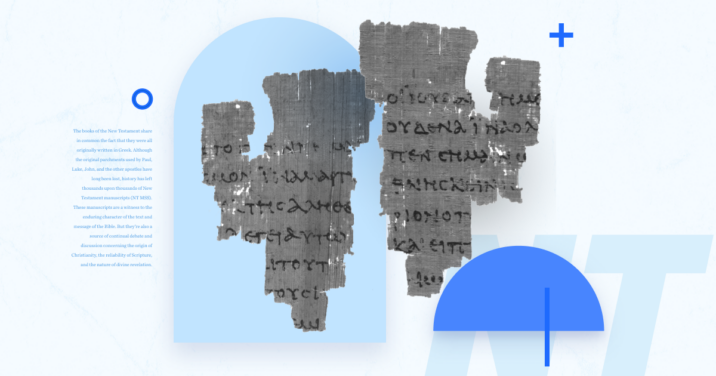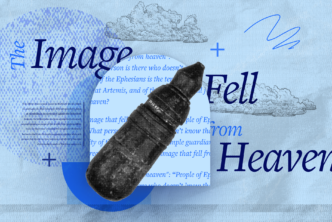The books of the New Testament share in common the fact that they were all originally written in Greek. Although the original parchments used by Paul, Luke, John, and the other apostles have long been lost, history has left thousands upon thousands of New Testament manuscripts (NT MSS). These manuscripts are a witness to the enduring character of the text and message of the Bible. But they’re also a source of continual debate and discussion concerning the origin of Christianity, the reliability of Scripture, and the nature of divine revelation.
What are NT MSS?
New Testament manuscripts are handwritten copies of the biblical text dating from the second century (AD 200) up to the mid-nineteenth century. The majority of NT MSS, however, were published prior to 1454 when Gutenberg’s printing press revolutionized book publishing. Ever since the first apostle set pen to parchment, faithful believers have been copying (or commissioning scribes to copy) the books of the New Testament for their use in church and home. Since at least the second century, translations of the Greek NT were being made into Latin and Syriac as well as Ethiopic, Gothic, Armenian, and Georgian. Since Greek NT MSS are the foundation of faithful Bible translation, they will be the focus of this article.
The number of Greek NT MSS is astounding relative to any other written texts from antiquity, often described as an embarrassment of riches. While copies of Homer’s Iliad—arguably the most important text in Greco-Roman society—currently number 1,535 manuscripts according to the Leuven Database of Ancient Books, the Greek NT MSS alone number close to six thousand. These MSS can be subdivided into four distinct groups:
1. Papyri
The fewest in number (approximately 155), the papyri are a classification of manuscript in which the text is written on sheets of papyrus. Mostly found in Egypt where hot, arid climate has preserved the papyri, they date from the second to seventh centuries. They are identifiable in an NT apparatus as “P” + a number (i.e., P46).
2. Majuscules
The majuscules are parchment manuscripts written in an uppercase Greek form throughout. These number approximately 338 and date from the fourth to eighth centuries. In an NT apparatus, they are indicated by a zero followed by a number (e.g., 0234).
3. Minuscules
Numbering approximately 2,958 manuscripts, the minuscules are the largest category of NT MSS. They are written in a lowercase form of Greek. The earliest of these is dated from AD 835 and written on parchment. From the twelfth century on, paper was used.
4. Lectionaries
Lectionaries were used for reading in a church setting and date from the eighth to the sixteenth centuries. They differ from the papyri, majuscules, and minuscules in that they include segments of NT books; the previous three categories include entire books normally in proper order. They were written in the majuscule (uppercase) script and number approximately 2,501 manuscripts.
5. Codices
While the most NT MSS include portions or fragments of NT books, if portions of the parchment have been lost, there are four significant manuscript witnesses that contain the entire text of the Bible. These codices (or entire “books”) include Codex Sinaiticus, Codex Vaticanus, Codex Alexandrinus, and Codex Ephraemi Rescriptus.
New discoveries
A little over half a dozen new NT MSS have been discovered every year over the past two decades. One highly publicized and recent find is the earliest known fragment of Mark 1, known officially as P137 (or P. Oxy. LXXXIII 5345) discovered in 2011. Although initial reports indicated a possible first-century date, later analysis suggests a date range of AD 150–250. While not from the first century, P137 brings the total number of NT MSS dated from the second century to nineteen. Further research may discover copies from the first century itself. Nonetheless, the text underlying our Bibles today in any translation will likely never change by any significant degree. Most of the earlier discoveries cohere entirely with the vast majority of other Greek NT MSS.
Why are NT MSS important for biblical studies?
The field of biblical studies is enriched by the overwhelming number of NT MSS in at least three specific ways.
1. The NT MSS are a tangible witness to divine providence
God chose to give his people a written record of his words through divine inspiration of human authors, and this written record has persisted for over two millennia. The NT MSS, including their number and agreement, demonstrate God’s preserving activity in history.
2. The NT MSS are a witness to the persistence and activity of the gospel message
Since the apostles first wrote their Gospels and epistles, faithful followers of Jesus have seen in these texts the power to live as new creations in Christ. The lectionaries are one good example, demonstrating that Christians throughout history considered these texts important enough to read publicly as an essential sacrament in the gathered church.
3. The NT MSS are a witness to ancient textual practice
The discipline of textual criticism compares the many manuscripts with each other to ascertain the earliest and most reliable form of the NT. Such research has clarified the history of how such passages were received—like the ending of Mark 16 and the pericope of the adulterer in John’s Gospel (John 7:53–8:11). The discipline has also helped us to understand ancient scribal tendencies, the identification of Jesus as Lord by earliest Christians, and the influence of Christianity on the important transformation of publication from parchments to codices to the printing press.
Video lectures
Further resources
Center for New Testament Textual Studies’ New Testament Critical Apparatus
Regular price: $99.99
Mobile Ed: NT308 The Reliability of New Testament Manuscripts (1 hour course)
Regular price: $39.99





